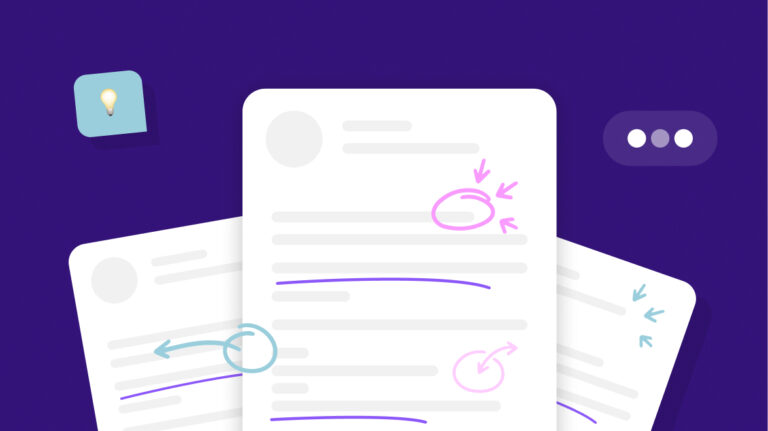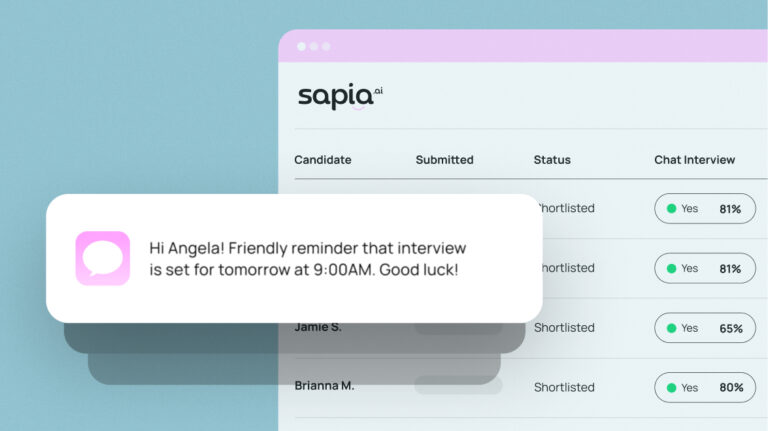Algorithmic Hiring to Improve Social Mobility

It is a widely held belief that diversity brings strength to the workplace through different perspectives and talents.
The value is greatest when companies harness the differences between employees from multiple demographic backgrounds to understand and appeal to a broad customer base. But true diversity relies on social mobility and therein lies the problem: the rate of social mobility in the UK is the worst in the developed world.
The root cause of the UK’s lack of social mobility can be found in the very place that it can bring the most value – the workplace. Employers’ recruiting processes often suffer from unconscious human bias that results in involuntary discrimination. As a result, the correlation between what an employee in the UK earns today and what his or her father earned is more apparent than in any other major economy.
This article explores the barriers to occupational mobility in the UK and the growing use of predictive analytics or algorithmic hiring to neutralise unintentional prejudice against age, academic background, class, ethnicity, colour, gender, disability, sexual orientation and religion.
The government wants to promote equal opportunity
The UK government has highlighted the fact that ‘patterns of inequality are imprinted from one generation to the next’ and has pledged to make their vision of a socially mobile country a reality. At the recent Conservative party conference in Manchester, David Cameron condemned the country’s lack of social mobility as unacceptable for ‘the party of aspiration’. Some of the eye-opening statistics quoted by Cameron include:
- 7% of the UK population has been privately educated.
- 22% of FTSE 350 chief executives have been privately educated.
- 44% within the creative industries have been privately educated.
- By the age of three, children from disadvantaged families are already nine months behind their upper middle class peers.
- At sixteen, children receiving school meals will on average achieve 1.7 grades lower in their GCSEs.
- For A levels, the school one attends has a disproportionate effect on A* level achievement; 30% of A* achievers attend an independent school, while children attending such schools make up merely 7% of the general population.
- Independent school graduates make up 32% of MPs, 51% of medics, 54% of FTSE 100 chief executives, 54% of top journalists and 70% of High Court judges.
- By the age of 42, those educated privately will earn on average £200,000 more than those educated at state school.
Social immobility is an economic problem as well as a social problem
The OECD claims that income inequality cost the UK 9% in GDP growth between 1990 and 2010. Fewer educational opportunities for disadvantaged individuals had the effect of lowering social mobility and hampering skills development. Those from poor socio economic backgrounds may be just as talented as their privately educated contemporaries and perhaps the missing link in bridging the skills gap in the UK. Various industry sectors have hit out at the government’s immigration policy, claiming this widens the country’s skills gap still further.
Besides immigration, there are other barriers to social mobility within the UK that need to be lifted. Research by Deloitte has shown that 35% of jobs over the next 20 years will be automated. These are mainly unskilled roles that will impact people from low incomes. Rather than relying too heavily on skilled immigrants, the country needs to invest in training and development to upskill young people and provide home-grown talent to meet the future needs of the UK economy. Countries that promote equal opportunity for everyone from an early age are those that will grow and prosper.
How are employers supporting the government’s social mobility policy?
The UK government’s proposal to tackle the issue of social mobility, both in education and in the workplace, has to be greatly welcomed. Cameron cited evidence that people with white-sounding names are more likely to get job interviews than equally qualified people with ethnic names, a trend that he described as ‘disgraceful’. He also referred to employers discriminating against gay people and the need to close the pay gap between men and women. Some major employers – including Deloitte, HSBC, the BBC and the NHS – are combatting this issue by introducing blind-name CVs, where the candidate’s name is blocked out on the CV and the initial screening process. UCAS has also adopted this approach in light of the fact that 36% of ethnic minority applicants from 2010-2012 received places at Russell Group universities, compared with 55% of white applicants.
Although blind-name CVs avoid initial discriminatory biases in an attempt to improve diversity in the workforce, recruiters may still be subject to similar or other biases later in the hiring process. Some law firms, for example, still insist on recruiting Oxbridge graduates, when in fact their skillset may not correlate positively with the job or company culture. While conscious human bias can only be changed through education, lobbying and a shift in attitude, a great deal can be done to eliminate unconscious human bias through predictive analytics or algorithmic hiring.
How can algorithmic hiring help?
Bias in the hiring process not only thwarts social mobility but is detrimental to productivity, profitability and brand value. The best way to remove such bias is to shift reliance from humans to data science and algorithms. Human subjectivity relies on gut feel and is liable to passive bias or, at worst, active discrimination. If an employer genuinely wants to ignore a candidate’s schooling, racial background or social class, these variables can be hidden. Algorithms can have a non-discriminatory output as long as the data used to build them is also of a non-discriminatory nature.
Predictive analytics is an objective way of analysing relevant variables – such as biodata, pre-hire attitudes and personality traits – to determine which candidates are likely to perform best in their roles. By blocking out social background data, informed hiring decisions can be made that have a positive impact on company performance. The primary aim of predictive analytics is to improve organisational profitability, while a positive impact on social mobility is a healthy by-product.
An example of predictive analytics at work
A recent study in the USA revealed that the dropout rate at university will lead to a shortage of qualified graduates in the market (3 million deficit in the short term, rising to 16 million by 2025). Predictive analytics was trialled to anticipate early signs of struggle among students and to reach out with additional coaching and support. As a result, within the state of Georgia student retention rates increased by 5% and the time needed to earn a degree decreased by almost half a semester. The programme ascertained that students from high-income families were ten times more likely to complete their course than those from low-income households, enabling preventative measures to be put in place to help students from socially deprived backgrounds to succeed.
What can be done to combat the biases that affect recruitment?
Bias and stereotyping are in-built physiological behaviours that help humans identify kinship and avoid dangerous circumstances. Such behaviours, however, cloud our judgement when it comes to recruitment decisions. More companies are shifting from a subjective recruitment process to a more objective process, which leads to decision making based on factual evidence. According to the CIPD, on average one-third of companies use assessment centres as a method to select an employee from their candidate pool. This no doubt helps to reduce subjectivity but does not eradicate it completely, as peer group bias can still be brought to bear on the outcome.
Two of the main biases which may be detrimental to hiring decisions are ‘Affinity bias’ and ‘Status Quo bias’. ‘Affinity bias’ leads to people recruiting those who are similar to themselves, while ‘Status Quo bias’ leads to recruitment decisions based on the likeness candidates have with previous hires. Recruiting on this basis may fail to match the selected person’s attributes with the requirements of the job.
Undoubtedly it is important to get along with those who will be joining the company. The key is to use data-driven modelling to narrow down the search in an objective manner before selecting based on compatibility. Predictive analytics can project how a person will fare by comparing candidate data with that of existing employees deemed to be h3 performers and relying on metrics that are devoid of the type of questioning that could lead to the discriminatory biases that inhibit social mobility.
“When it comes to making final decisions, the more data-driven recruiting managers can be, the better.”
Bias works on many levels of consciousness
‘Heuristic bias’ is another example of normal human behaviour that influences hiring decisions. Also known as ‘Confirmation bias’, it allows us to quickly make sense of a complex environment by drawing upon relevant known information to substantiate our reasoning. Since it is anchored on personal experience, it is by default arbitrary and can give rise to an incorrect assessment.
Other forms of bias include ‘Contrast bias’, when a candidate is compared with the previous one instead of comparing his or her individual skills and attributes to those required for the job. ‘Halo bias’ is when a recruiter sees one great thing about a candidate and allows that to sway opinion on everything else about that candidate. The opposite is ‘Horns bias’, where the recruiter sees one bad thing about a candidate and lets it cloud opinion on all their other attributes. Again, predictive analytics precludes all these forms of bias by sticking to the facts.
https://sapia.ai/blog/workplace-unconscious-bias/
Age is firmly on the agenda in the world of recruitment, yet it has been reported that over 50% of recruiters who record age in the hiring process do not employ people older than themselves. Disabled candidates are often discriminated against because recruiters cannot see past the disability. Even these fundamental stereotypes and biases can be avoided through data-driven analytics that cut to the core in matching attitudes, skills and personality to job requirements.
Once objective decisions have been made, companies need to have the confidence not to overturn them and revert to reliance on one-to-one interviews, which have low predictive power. The CIPD cautions against this and advocates a pure, data-driven approach: ‘When it comes to making final decisions, the more data-driven recruiting managers can be, the better’.
The government’s strategy for social mobility states that ‘tackling the opportunity deficit – creating an open, socially mobile society – is our guiding purpose’ but that ‘by definition, this is a long-term undertaking. There is no magic wand we can wave to see immediate effects.’ Being aware of bias is just the first step in minimising its negative effect in the hiring process. Algorithmic hiring is not the only solution but, if supported by the government and key trade bodies, it can go a long way towards remedying the inherent weakness in current recruitment practice. Once the UK’s leading businesses begin to witness the benefits of a genuinely diverse workforce in terms of increased productivity and profitability, predictive hiring will become a self-fulfilling prophecy.


